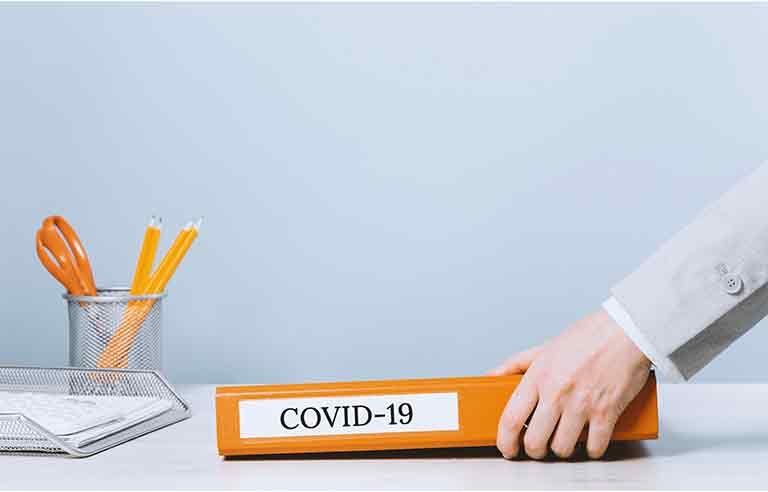Updated CDC guidance on COVID-19 shifts focus away from employers

Atlanta — Citing the availability of numerous tools that help reduce COVID-19 severity, the Centers for Disease Control and Prevention has modified its guidance on preventing transmission of the disease.
Much of the updated guidance’s focus has shifted to individuals understanding their risk for severe illness and protecting themselves – and away from employers, schools and other organizations.
CDC still recommends that organizations improve building ventilation. Those steps include using HEPA filters, opening windows to bring in outdoor air and turning on fans to improve airflow. Additionally, turn thermostats to “ON” instead of “AUTO” to provide continuous airflow and filtration, and move indoor activities outdoors when possible.
In one of the most significant changes, CDC has dropped references to 6-foot physical distancing, but warns: “The closer you are to a greater number of people, the more likely you are to be exposed to the virus that causes COVID-19. To avoid this possible exposure, you may want to avoid crowded areas, or keep distance between yourself and others.”
The agency recommends avoiding contact with people who have COVID-19. However, if someone is taking care of a sick person at home, that may not be possible, so caretakers should use “as many prevention strategies as you can,” such as wearing a high-quality mask (N95 or KN95, for example), washing hands and improving ventilation.
The relaxed distancing restriction and mask requirements may change based on COVID-19 community levels, CDC says.
Instead of advising anyone who’s been exposed to COVID-19 to quarantine, the agency recommends wearing a high-quality mask for 10 days and getting tested on the fifth day after exposure.
After a positive COVID-19 test, stay home for five days and wear a high-quality mask around others. If you’re symptom-free and have no signs of fever for at least 24 hours after those five days (without the need for medication), you can stop isolating. However, still wear a high-quality mask through Day 10. Also, post-isolation, avoid being around people who may be at risk for severe COVID-19 until at least 11 days after testing positive.
Other guidance:
- Isolate through Day 10 if you’re experiencing moderate/severe COVID-19 or a weakened immune system. If you’re unsure if your symptoms are moderate or severe, consult a health care provider.
- If you’re experiencing severe COVID-19 or a weakened immune system, consult a doctor before ending isolation.
- If symptoms have worsened at the end of isolation, restart the isolation period.
- Asymptomatic people without known exposures will no longer need screening tests.
“We’re in a stronger place today as a nation, with more tools – like vaccination, boosters and treatments – to protect ourselves and our communities from severe illness from COVID-19,” said Greta Massetti, chief of CDC’s Field Epidemiology and Prevention Branch. “We also have a better understanding of how to protect people from being exposed to the virus, like wearing high-quality masks, testing and improved ventilation. This guidance acknowledges that the pandemic is not over, but also helps us move to a point where COVID-19 no longer severely disrupts our daily lives.”
Post a comment to this article
Safety+Health welcomes comments that promote respectful dialogue. Please stay on topic. Comments that contain personal attacks, profanity or abusive language – or those aggressively promoting products or services – will be removed. We reserve the right to determine which comments violate our comment policy. (Anonymous comments are welcome; merely skip the “name” field in the comment box. An email address is required but will not be included with your comment.)

